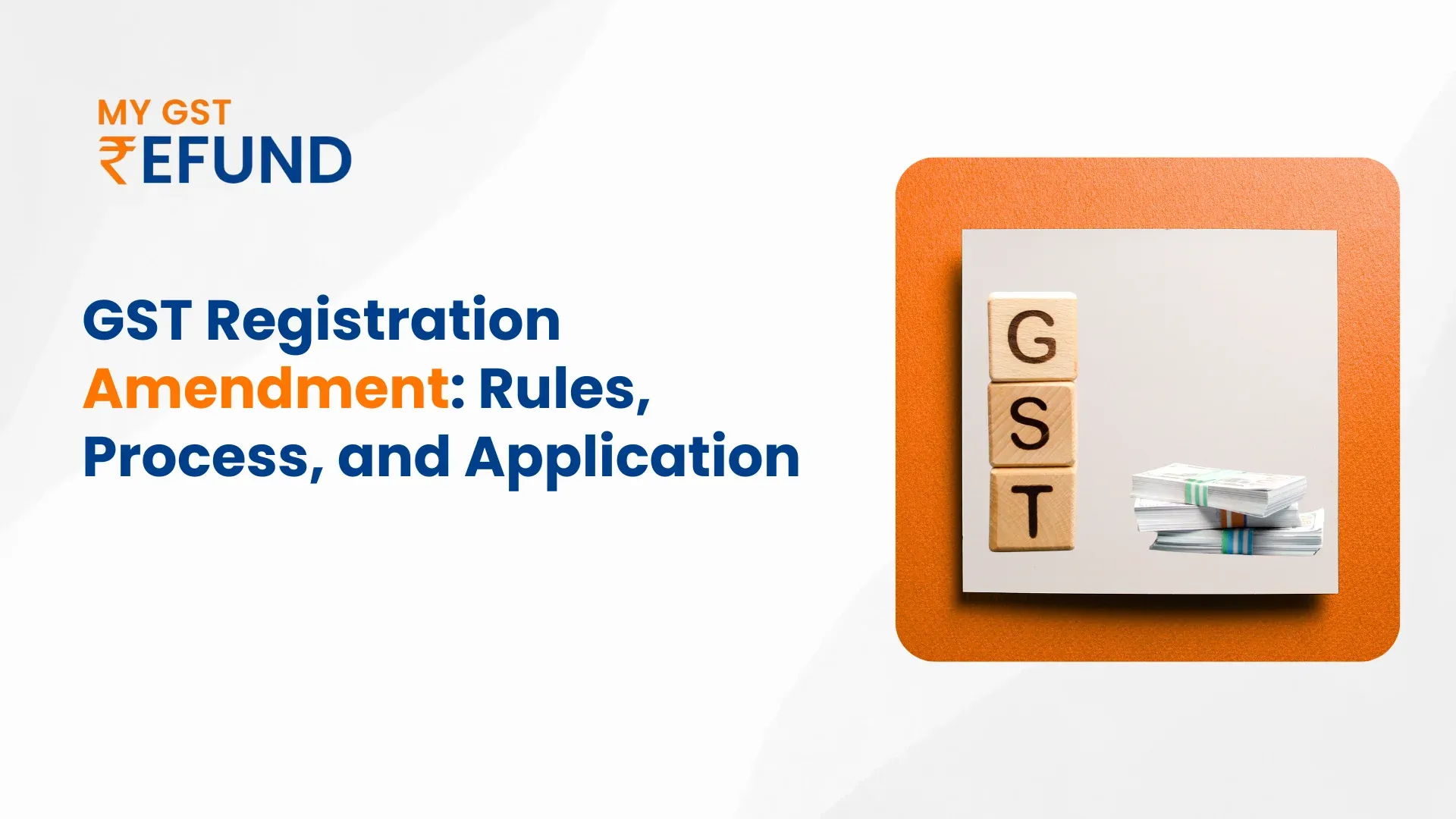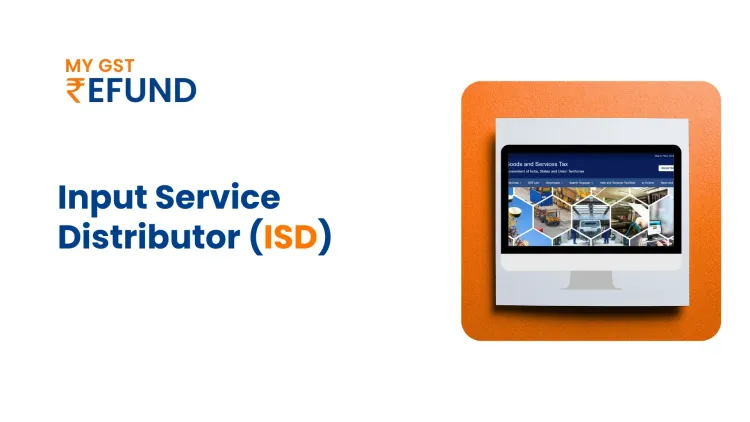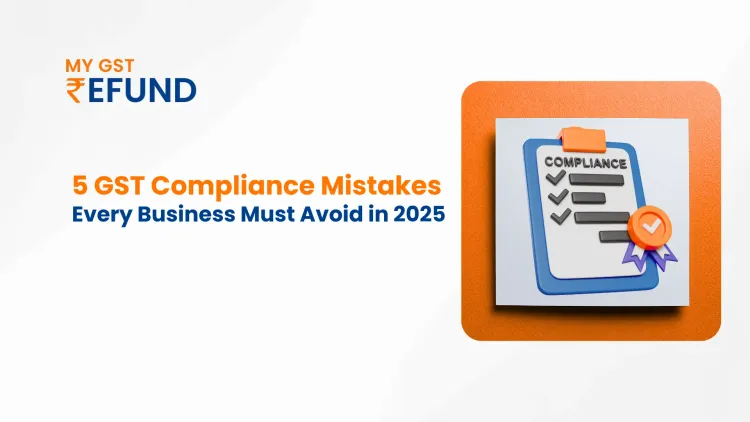GST Registration Amendment: Rules, Process, and Application
All business entities except those below the turnover limit and not making interstate supplies must acquire GST registration in India. Businesses acquire legal rights to collect taxes, claim input taxes, and file GST returns through their GSTIN, which is issued after approval of their registration. Every business operates dynamically because they expand their operations and moves its facilities, or transfers ownership while undergoing continuous development. Businesses need to perform updates on the initial information they presented during their registration process. The modification process for GST registration follows the procedure called GST Registration Amendment.
This article provides an in-depth analysis of the GST Registration Amendment procedure while explaining the available core and non-core data fields for modification and relevant qualification standards and requirements, alongside the documentation process and the duration needed for approval, together with a complete guide for GST portal application submission.
What is GST registration?
Every business that makes taxable supplies through goods or services needs to register for GST according to the Goods and Services Tax Act. After a successful enrollment process, the business will receive a 15-digit GST Identification Number that functions as the main identification mark for all tax procedures. Present in all invoices and official documents, GST returns have to display this number. After registration, businesses can tax customers correctly according to the GST legislation and claim input tax credits for their acquisitions. The correct maintenance of details is crucial after initial registration, even though a one-time sign-up is mandatory. The amendment process proves essential because it enables this system to function properly.
Read More: Complete Guide to GST Registration: Eligibility, Fees, and Compliance
What is the GST Registration Amendment?
GST registration amendment means changing the information given at the time of GST registration through an official process. Business address and legal name alterations, as well as stakeholder partner or director combinations, affect the necessity for GST registration amendment processes. These processes also include updating contact information. The active maintenance of your registration data will sustain business procedures without disruption and let you meet regulatory requirements while preventing penalties.
Online submission of the amendment takes place on the GST portal system. The approval process from a GST officer depends on the type of changes filed through the portal. GST Registration Amendment Rules contain all procedures related to alteration requests, including what items can be updated, what steps must be followed, and how long the approval process takes.
Types of Amendments in GST Registration
Your application to modify GST registration includes two distinctive field categories known as core fields and non-core fields. The classification directs GST officers to review changes before approval.
1. Core Fields
These are important details. The process of changing core fields in GST registration needs approval from a GST officer for review. An automatic approval process becomes effective whenever the officer fails to respond during the specified period.
Core fields include:
- The business name is subject to change only when the PAN number remains stable.
- Main business address and any additional locations (as long as there’s no state change).
- Adding or removing key people like promoters, partners, Karta, the CEO, or members of the management team.
2. Non-Core Fields
These are less critical details. The GST portal allows instant updates, which receive automated approval since tax officer intervention is unnecessary.
Non-core fields include:
- Bank account details
- Business activity information
- Product or service details
- Users can modify state-specific details when they do not modify the state information itself.
Changing or updating authorized signatories - The GST portal allows instant updates for the personal information of promoters or partners who maintain their current status without replacement.
- Any minor updates made to addresses that already exist within the system record
Form GST REG-14 serves to update mobile numbers along with email for authorized signatories, which can be verified online.
Read More:
Who Can File an Amendment?
The privilege to apply for GST amendment exists only for specific categories of taxpayers. The eligibility is clearly defined. A registered taxpayer under any category, such as regular businesses, composition dealers, or casual taxable, possesses the right to file an amendment request.
Entities with a Unique Identification Number (UIN), including UN bodies and embassies, can file updates that pertain to their registered information. Non-resident taxable persons, along with online service providers who are GST registered, also have the authority to update their information. The GST practitioner helps clients file amendment applications through authorized approval.
Get your GST Registration easily through MYGST Refund expert assistance!
Documents Required for GST Registration Amendment
All documents must be uploaded in PDF or JPEG format and should be legible and valid.
Procedure for GST Registration Amendment Application
For Core Fields
1. Log in to the GST Portal
Navigate to: Services > Registration > Amendment of Registration Core Fields.
2. Select the Correct Tab
Choose one of the relevant tabs:
- Business Details
- Principal Place of Business
- Additional Place of Business
- Promoters/Partners
3. Update the Required Fields
Add, edit, or delete the necessary information and upload supporting documents.
4. Reason for Amendment
Clearly mention the reason and the effective date of the change.
5 . Verification & Submission
Submit the application using DSC, e-signature, or EVC. A unique ARN (Application Reference Number) will be generated.
6 . Approval by Officer
If everything is in order, the officer issues an approval in REG-15, and the GST registration certificate is updated.
For Non-Core Fields
1. Log in to the GST Portal
Navigate to: Services > Registration > Amendment of Registration Non-Core Fields.
2. Select Non-Core Tabs
These include bank details, business activities, and contact info.
3 .Update the Information
Make necessary changes and save the form.
4 . Verification & Submission
Complete verification using DSC/EVC. You’ll receive an ARN instantly.
Non-core field changes are accepted instantly and don’t require officer approval.
Approval Process and Timeline
The GST Registration Amendment Process follows a well-structured time frame. The submitting GST officer needs to complete a review of the amendment application by either accepting or rejecting it during the 15-working-day timeframe. The update request for certification results in making Form GST REG-06 available to the taxpayer. A notice for clarification will be sent to applicants by the officer when he discovers discrepancies or needs additional information.
Core field amendments require mandatory approval from the officer, and after a delay of more than 15 working days without officer communication, it will result in automatic approval. The system approves non-core fields together with contact detail changes automatically upon successful submission and verification.
The portal allows users to save their applications for a duration of 15 days until final submission. A saved draft submission that fails to meet the time deadline will result in system deletion of all contents.
Important Things to Keep in Mind
Some parts of the registration cannot be modified through the amendment process. The amended system does not permit changing the PAN that connects with the GSTIN since GST registration functions through PAN links. Businesses must get a completely new registration when they switch their organizational constitution from sole proprietorship to a private limited company. A change in business operations location to another state requires you to end your existing GST registration and then start a new registration in the new state.
Businesses can modify their main authorised signatory but need to handle this action with extreme attention. Before removing the current signatory, the system requires creating a new signatory position. Failing to execute this requirement means the amendment will be denied.
Calculate your GST Refund instantly! - Calculate Now!
Conclusion
The GST Registration Amendment Process operates as a fundamental system to protect the accuracy and compliance of business information in GST. All changes to GST core fields or contact details require the correct use of the application procedure to prevent legal problems and clear tax filing and potential penalties.
Every business requires a knowledgeable understanding of the GST Registration Amendment Rules, together with current compliance standards, to maintain continuous operations. Maintaining up-to-date GST registration details enables you both to follow legal requirements and demonstrate accountability and transparency to your business clients and partners.
Frequently Asked Questions (FAQs)
Can I amend my GST registration multiple times?
Yes, but you cannot submit a new amendment application while a previous one is still pending.
Do I need to pay a fee for filing an amendment application?
No, there is no government fee for filing an amendment in GST registration.
What if my application is rejected?
You will be informed about the reason for rejection. You can make the necessary corrections and reapply.
How long does it take to get an updated certificate after filing?
If it's a core field amendment, approval usually takes up to 15 working days. Non-core changes are updated instantly.
Is professional help necessary?
While the portal is user-friendly, businesses often prefer expert services for accuracy and speed. A reliable GST registration service can ensure your application is correctly filed the first time.
Related Posts








